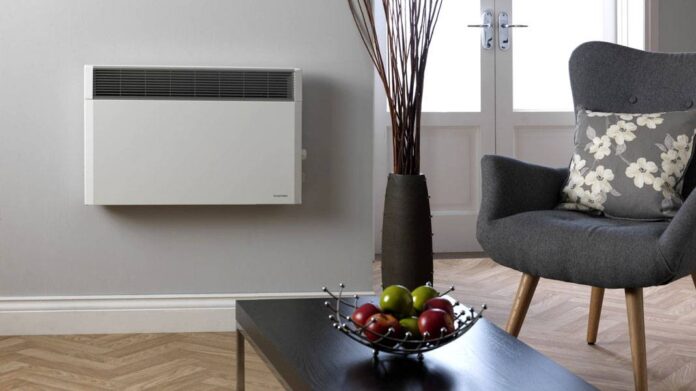Are you looking to upgrade your home heating system? Infrared heater is a great option for those who want more energy efficiency and comfort. In this blog post, we’ll be breaking down the basics of infrared heating, how it works, and how it can transform your heating experience. You’ll learn all about the potential benefits and drawbacks of switching to infrared heat so you can decide whether this is the right option for your home.
Understanding Infrared Heat
Infrared heat is a type of radiant heat that is emitted by infrared heaters. Unlike traditional heating systems that rely on convection to warm the air in a room, infrared heaters emit heat waves that directly heat the objects and surfaces in their line of sight. This means that instead of waiting for the air to heat up and then warm the room, infrared heaters provide instant warmth as soon as they are turned on.
So how does this work? Infrared heaters use electromagnetic radiation to emit infrared heat waves. These waves travel through the air until they reach an object or surface. Once they come into contact with an object, the waves are absorbed and converted into heat energy. This process is similar to how the sun warms the earth, as the sun’s rays also emit infrared heat.
The beauty of infrared heat lies in its ability to efficiently transfer warmth. Unlike traditional heating systems, which can lead to heat loss through ducts or other openings, infrared heaters provide direct and targeted heat. This not only ensures that the heat is focused where it is needed most, but it also eliminates wasted energy.
How Do Infrared Heaters Work?
How do these amazing machines work? Well, let’s dive into the fascinating world of infrared heaters!
At the heart of an infrared heater is a powerful heating element that generates infrared heat waves. These heat waves are emitted into the surrounding space, providing immediate and efficient warmth. The heating element can be made of various materials, including quartz, ceramic, or metal coils.
When you turn on an infrared heater, the heating element begins to heat up rapidly. As it reaches its operating temperature, it starts emitting infrared heat waves. These waves travel through the air in all directions until they come into contact with objects or surfaces in their line of sight.
Once the infrared waves hit an object, they are absorbed by the molecules within it, causing them to vibrate. This vibration creates heat energy, which then spreads throughout the object. This is why when you stand in front of an infrared heater, you feel an instant warmth on your skin – your body absorbs the heat waves.
One key advantage of infrared heaters is that they do not rely on air movement to distribute heat. This means there are no fans or blowers to circulate air, reducing noise and preventing the spread of dust or allergens. Instead, the heat waves emitted by the infrared heater travel directly to the objects and people in the room, providing targeted and efficient heating.
Benefits of Electric Infrared Heater
If you’re considering upgrading your home heating system, electric infrared heater offers a range of benefits that makes it a great option. Here are some of the key advantages of electric infrared heaters:
Energy Efficiency: Electric infrared heaters are known for their energy efficiency. Unlike traditional heating systems that rely on heating a room’s air, infrared heaters heat objects and surfaces directly. This means no energy is wasted on heating empty spaces or circulating air. As a result, you can enjoy significant energy savings and lower utility bills.
Instant Heat: One of the biggest advantages of electric infrared heaters is their ability to provide instant heat. You’ll start feeling the warmth as soon as you turn on the heater. There’s no need to wait for the room to heat up or for the system to kick in. This makes electric infrared heaters ideal for quickly warming a room or providing additional heat in specific areas.
Zone Heating: Electric infrared heaters allow you to practice zone heating, which means you can heat specific areas of your home instead of heating the entire space. This targeted heating approach allows you to save even more energy and money by only heating the rooms that are in use. It’s a flexible and cost-effective way to stay warm and comfortable.
Health Benefits: Unlike traditional heating systems that rely on forced air, electric infrared heaters do not circulate dust, allergens, or other pollutants. This makes them a healthier option, especially for those with respiratory issues or allergies. In addition, the gentle, comforting heat emitted by infrared heaters can relieve muscle aches and pains.
Low Maintenance: Electric infrared heaters require minimal maintenance. Since they don’t have any moving parts or filters to replace, there’s little to worry about regarding upkeep. Simply keep the heater clean and ensure it is placed in a safe and suitable location, and it will continue to provide efficient and reliable heat.
Efficiency Comparison with Traditional Heating
When it comes to heating your home, efficiency is key. So, how does infrared heating compare to traditional heating systems in terms of efficiency?
Traditional heating systems, such as forced-air furnaces or baseboard heaters, rely on convection to warm the air in a room. This means that the air needs to be heated first, then circulates throughout the space, gradually raising the temperature. This process can take some time, especially if you’re trying to heat a large room or an entire house.
On the other hand, infrared heaters provide instant heat as soon as they are turned on. This is because they emit infrared waves that directly heat the objects and surfaces in their line of sight rather than heating the air. As a result, you can feel the warmth almost immediately without waiting for the room to heat up.
This instant heat is not only more comfortable but also more efficient. Traditional heating systems often suffer from heat loss through ducts or other openings, leading to wasted energy. Infrared heaters, on the other hand, provide direct and targeted heat, ensuring that the warmth is focused where it is needed most. This means that there is less energy wasted on heating empty spaces or circulating air, resulting in significant energy savings and lower utility bills.
Maximizing the Potential of Outdoor Infrared Heater
Now that we’ve explored the basics of infrared heaters and their benefits for indoor heating let’s shift our focus to outdoor infrared heaters. These powerful machines have the potential to transform your outdoor living spaces, allowing you to enjoy the beauty of nature even in colder weather.
Outdoor infrared heaters work in a similar way to their indoor counterparts, using infrared waves to provide instant heat. But what sets them apart is their ability to withstand the elements and efficiently warm outdoor spaces. Whether you have a patio, deck, or backyard, outdoor infrared heaters can extend your outdoor season and create a cozy and inviting atmosphere for gatherings or quiet nights under the stars.
To maximize the potential of your outdoor infrared heater, consider the following tips:
- Proper Placement: Position your outdoor infrared heater strategically to ensure maximum heat coverage. Place it in an area where people gather most, such as near seating areas or dining spaces. Avoid obstructing the heater’s line of sight, as it needs a clear path to emit heat waves effectively.
- Choose the Right Size: Outdoor infrared heaters come in various sizes and heat outputs. Consider the size of your outdoor space and the number of people you typically entertain. Opt for a heater that can provide sufficient heat without overwhelming the area.
- Outdoor-Friendly Materials: Look for outdoor infrared heaters made from weather-resistant materials. Stainless steel or powder-coated finishes are ideal, as they can withstand the elements and prevent rust or corrosion.
- Consider Safety: Ensure your outdoor infrared heater has safety features such as a tip-over switch or overheating protection. This will give you peace of mind, knowing that the heater will automatically shut off in case of any accidents.
- Regular Maintenance: Like any outdoor appliance, outdoor infrared heaters require regular maintenance. Keep the heater clean, inspect the components, and follow the manufacturer’s guidelines for proper care and maintenance.
FAQs
Are you curious about infrared heaters? Here are three frequently asked questions to help clear up any confusion:
1. Are infrared heaters safe to use?
Absolutely! Infrared heaters are considered safe when used properly. They emit a type of radiation that is harmless to humans and pets. The heating element in the heater does get hot, so it’s important to keep flammable materials away and use caution around children. However, most infrared heaters come with safety features like tip-over switches and overheat protection to provide added peace of mind.
2. Do infrared heaters save money on energy bills?
Yes, they do! Infrared heaters are known for their energy efficiency. By directly heating objects and surfaces instead of warming up the air, they eliminate energy waste. This targeted heating approach means you only heat the areas that need it, saving you money on heating unused spaces. Additionally, because infrared heaters provide instant heat, you don’t have to keep them running for long periods, further reducing energy consumption.
3. Can infrared heaters be used outdoors?
Absolutely! Infrared heaters are a great choice for outdoor spaces, allowing you to enjoy your patio or deck even in cooler weather. Outdoor infrared heaters are specifically designed to withstand the elements and provide efficient heat distribution. They can create a warm and inviting atmosphere for gatherings or cozy nights outside. Just make sure to choose an outdoor-rated heater and follow the manufacturer’s instructions for safe and proper use.
Conclusion
Infrared heaters are a game-changer when it comes to home heating. They offer a multitude of benefits, from energy efficiency and instant heat to improved air quality and targeted warmth. By understanding the basics of infrared heat and how infrared heaters work, you can make an informed decision on whether this heating option is right for you. Outdoor infrared heaters take the benefits of infrared heat beyond the walls of your home. They can transform your outdoor living spaces, allowing you to enjoy the beauty of nature even in colder weather. By strategically placing them, choosing the right size, and opting for outdoor-friendly materials, you can create a warm and inviting outdoor space for year-round enjoyment.



